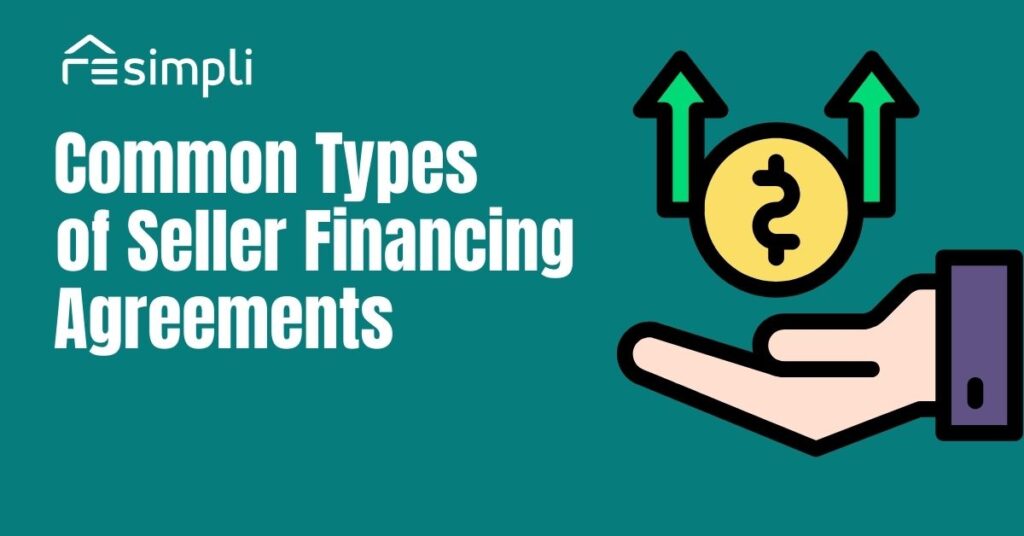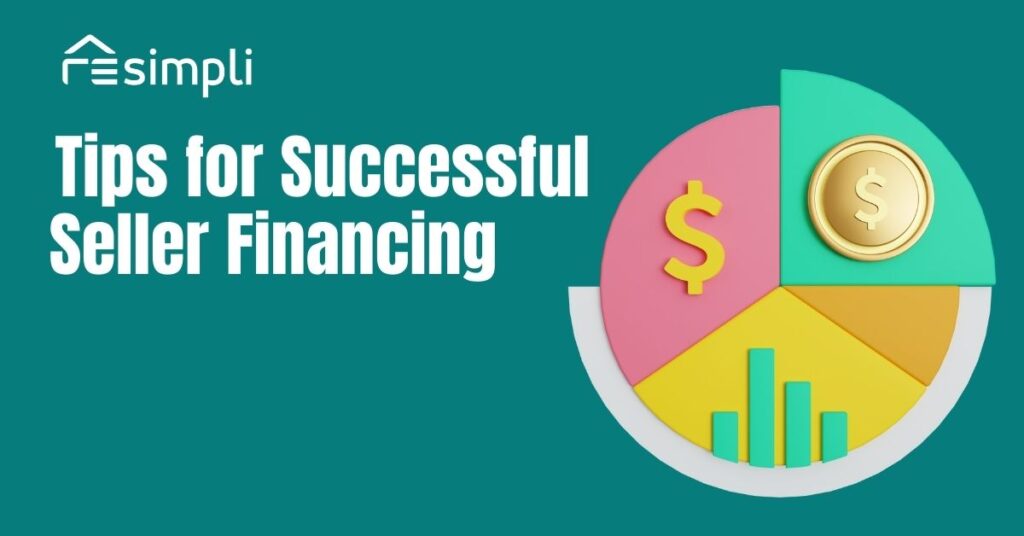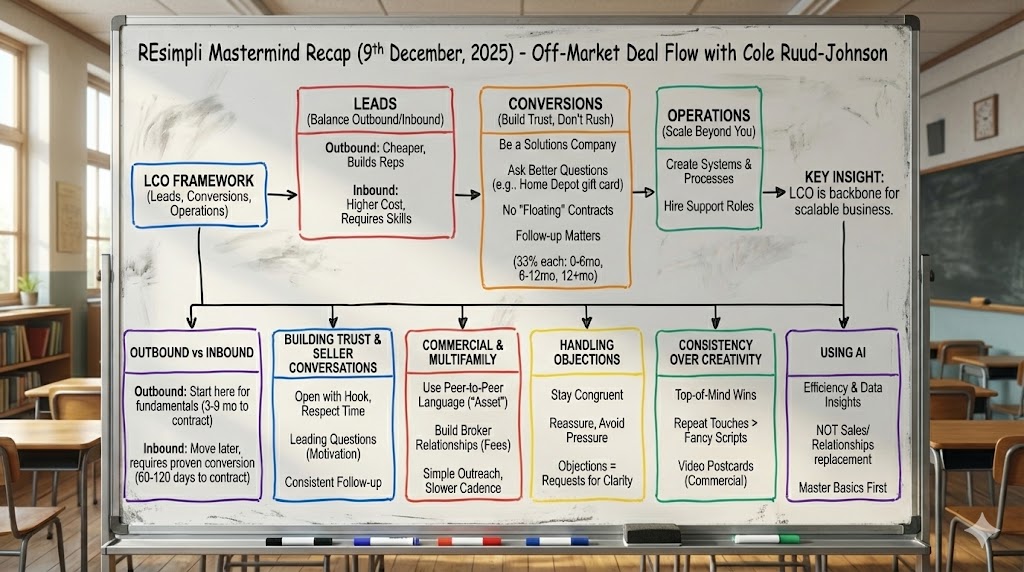What is Seller Financing? A Comprehensive Guide for Real Estate Investors
When preparing for a real estate transaction, understanding the various financing methods available can be a game-changer for buyers and sellers.
If an agreement can be reached using an alternative financing method, both parties could save time and money on the deal. Among these methods, seller financing is an increasingly popular strategy.
What is seller financing in real estate, and how does it differ from traditional financing methods?
This approach, also known as a seller-financed mortgage, involves the seller of the property taking the role of lender and offering a mortgage to the buyer.
This financing method opens doors for buyers who otherwise might not qualify for conventional loans.
It also allows sellers to sell their property faster and potentially earn interest income.
While some may see a seller financing contract as a financial transaction, it can also be viewed as a creative solution in a dynamic real estate market that often demands agility and innovation.
With nearly 1 in 15 homebuyers using alternative financing methods, understanding the ins and outs of seller financing and other methods could be valuable.
In this guide, we’ll try to demystify the process, outline how it works, its benefits and drawbacks, and share essential tips for successful transactions.
Understanding seller financing could unlock new possibilities in your real estate ventures, whether you’re a seasoned investor or a first-time homebuyer.
How Does Seller Financing Work?
As mentioned earlier, seller financing is a financial arrangement where the seller of a property becomes the lender and directly finances the real estate purchase for the buyer.
This nontraditional approach bypasses financial institution mortgage lenders to create a more streamlined and personalized transaction between the buyer and seller. In 2022, more than 83,000 real estate transactions in the US were owner financed.
While trending down slightly in 2023, analysts anticipate the need for seller financing to increase once again as traditional mortgages have become more challenging to obtain.

The Process Explained
Let’s explore the steps involved in this type of transaction.
- Buyer and seller agree on the terms of the sale, including purchase price, interest rate, and repayment schedule.
- The agreement is formalized through a promissory note that outlines the loan’s terms.
- The buyer pays the seller a down payment.
- The buyer continues to make payments to the seller throughout the loan.
Example of Seller Financing
Both parties agree to the purchase price of $800,000 with a 20% down payment of $160,000. The repayment terms for the remaining $640,000 are then decided upon.
The buyer agrees to a 7% fixed interest rate over a 25-year amortization and a balloon payment due after 10 years.
Keep in mind that during the loan’s term, the buyer will be responsible for purchasing homeowners’ insurance and paying all property taxes. These amounts are in addition to the seller-financed mortgage.
Importance in Real Estate Transactions
Seller financing plays a needed role in the real estate market, especially when buyers struggle to secure funding through traditional means.
This difficulty could be due to many reasons, such as credit issues, a high debt-to-income, or the unique nature of the property itself.
Today’s mortgage lenders require a credit score in the neighborhood of 620 with a 3% or more significant down payment to secure a loan.
For sellers, an owner-financed option will open a wider pool of potential buyers.
It can speed up the sale process by avoiding the lengthy processes of lenders, appraisers, and home inspectors.
It also offers a possible income stream for the seller through interest payments, which can be more lucrative for them than investment returns.
Key reasons for this type of transaction include:
- Difficulty obtaining a loan from a traditional mortgage lender.
- The selling price is too high to meet appraisal requirements from conventional lenders.
- You want to close the transaction quickly.
- The parties would like to avoid closing costs.
Common Types of Seller Financing Agreements
Seller financing contracts can happen in several forms, each with its own characteristics and potential benefits for buyers and sellers alike.

Land Contracts
A land contract is a seller financing method where the buyer can use the property while paying for it, but the seller retains legal title until the total purchase price is paid.
Land contracts often result in a balloon payment.
The terms of land contracts, including the repayment plan and interest rates, are negotiated between buyer and seller, offering a tailored approach to property financing.
Assumable Mortgage
An assumable mortgage enables a buyer to take over the seller’s existing mortgage, inheriting the same interest rate and terms.
This option can be a benefit if the existing mortgage has a lower interest rate than current market rates.
Assumable mortgages can ease the property ownership transition while potentially offering the buyer financial benefits.
Lease Purchase Agreements
Lease purchase or rent-to-own agreements allow renters to eventually purchase the property they are leasing. Under this contract, the renter pays an option fee for the exclusive right to buy the property at a later date, usually at a predetermined price. This option might be attractive for a renter building credit or saving for a down payment while living in the home they wish to buy.
Land Loans
Land loans are a specific type of seller financing focused on the purchase of land.
These loans are designed for buyers looking to assume a plot for residential or commercial development at a later time.
Terms for land loans can vary significantly, reflecting the inherent risks and potentials of undeveloped land.
Holding Mortgage
In a holding mortgage agreement, the seller acts as the lender by providing the buyer with a loan to purchase the property.
The buyer makes regular payments to the seller under the agreed-upon terms, with the seller retaining the title until the loan is fully repaid.
This arrangement allows direct financing from seller to buyer, often with personalized terms that benefit both parties.
Each type of seller financing agreement offers unique opportunities and challenges. Before entering into any agreement, buyers and sellers must conduct thorough research and consult with qualified professionals.
Advantages of Seller Financing
Here are some common ways buyers and sellers benefit from seller financing.
For Buyers:
- Accessibility: Makes property ownership available to those who might not qualify for traditional loans.
- Flexibility: Terms can be negotiated directly with the seller, providing more flexibility on repayment terms and interest rates than traditional loans.
- Speed: Transactions can be completed faster without the need for bank approvals.
- Cost Savings: Avoid hefty closing costs from financial institutions, appraisers, and inspectors.
For Sellers:
- Increased Buyer Pool: Attracts a broader range of potential buyers.
- Sell As Is: Move properties quickly without lender requirements for appraised values.
- Income Stream: Generates regular income through interest payments.
- Tax Benefits: May offer certain tax advantages by spreading out capital gains from the home sale over several years.
Disadvantages of Seller Financing
Like all real estate decisions, buyers and sellers must also weigh the risks of such transactions before they enter into an agreement.
For Buyers:
- Higher Interest Rates: Interest rates may be higher than traditional mortgage rates.
- Shorter Loan Terms: A seller-financed mortgage may have shorter terms, leading to a balloon payment at the end.
- Down Payment Requirement: Most sellers will require a down payment of as much as 20% of the purchase price to begin a seller-financed sale.
For Sellers:
- Risk of Default: If the buyer defaults, the seller must initiate foreclosure, which can be time-consuming and costly.
- Opportunity Cost: The seller’s capital is tied to the property, potentially preventing them from taking advantage of other investment opportunities.
This financing option’s flexibility and accessibility make it invaluable in the real estate market. It offers an alternative path to property ownership and investment earnings.
Tips for Successful Seller Financing
Seller financing requires careful planning and execution to mitigate risks and maximize returns for both parties. Here are some helpful tips to ensure a smooth and successful seller financing contract:

Set a Fair Interest Rate
The interest rate in a seller financing deal is an impactful component that affects the deal’s attractiveness for both buyer and seller.
To set a fair interest rate, the seller should consider the current market rates for traditional mortgages, the buyer’s credit risk, and the terms of the deal.
A fair rate makes the financing appealing to the buyer and ensures a competitive return for the seller.
It’s essential to strike a balance that reflects the risk involved while remaining within reach for potential buyers.
Conduct Thorough Background Checks on the Buyer
Before agreeing to offer seller financing, the seller must conduct comprehensive background checks on the potential buyer.
These checks should include assessing their credit history, employment stability, and financial health. Such due diligence helps evaluate the buyer’s ability to meet payment obligations, reducing the risk of future defaults.
Credit reports, income statements, and references can provide insight into the buyer’s financial behavior and reliability.
Draft a Comprehensive and Legally Binding Agreement
A well-crafted agreement is critical to the success of a seller-financing deal.
This contract should detail every aspect of the transaction, including the loan amount, interest rate, repayment schedule, default consequences, and any other relevant terms.
Ensuring the agreement is legally binding and enforceable is crucial; work with a real estate lawyer to ensure the terms are enforceable.
The agreement should clearly outline the rights and responsibilities of each party, including the transfer of ownership and the process for handling potential disputes, defaults, or foreclosure.
Ensuring Proper Documentation and Recordkeeping
Accurate and complete documentation is necessary throughout the seller financing process.
This documentation includes completing an initial agreement, amendments, payment records, and communications between the buyer and seller.
Recordkeeping ensures transparency, accountability, and a smoother transaction.
It also provides both parties with a clear history of the deal and expectations, which are essential in case of disputes or if needed for tax purposes.
Seeking Professional Advice
Given the complexities and legal implications of seller financing, seeking advice from real estate attorneys or financial advisors is highly recommended.
These professionals can provide guidance on how to structure a deal, draft an agreement, and navigate legal requirements.
Their expertise ensures the seller financing arrangement complies with all applicable laws and regulations, minimizing potential legal issues in the future.
By considering these tips, buyers and sellers can navigate the nuances of seller financing with greater confidence and security.
The transaction’s success ultimately depends on the diligence, fairness, and cooperation of both parties involved.
More Best Practices in Seller Financing
For a successful seller financing deal, both parties must approach the option with a strategy to ensure a mutually beneficial arrangement. Here are more best practices to consider:
For Sellers:
- Valuation and Pricing: To set a fair price, ensure the property is accurately valued. Consider hiring a professional appraiser.
- Interest Rates and Terms: Offer competitive yet realistic interest rates and flexible terms to attract serious buyers.
- Legal Protections: Use legal mechanisms, such as a mortgage or deed of trust, to protect your interest until the buyer completes payments.
For Buyers:
- Financial Assessment: Thoroughly assess your financial situation to ensure you can meet the payment terms, including any balloon payments.
- Negotiation: Be prepared to negotiate terms, including down payment, interest rate, and repayment schedule, to fit your financial plan.
- Title and Lien Searches: Conduct a title search to ensure the property is free of liens and that the seller has the right to finance the sale.
Conclusion
Seller financing stands out among alternative financing options as a versatile and innovative solution that bridges gaps in traditional financing methods.
Allowing sellers to finance the purchase directly to the buyer creates opportunities for transactions that might not otherwise be possible. In 2022, 9.1% of home purchase applications were denied by traditional lenders.
Seller financing benefits are many, including giving buyers greater accessibility to property ownership and providing sellers with a competitive edge, an income stream through interest, and potentially faster property sales.
However, the attractiveness of seller financing does not come without its challenges.
For buyers, the prospect of higher interest rates and the need for a significant down payment can be daunting. Meanwhile, sellers must navigate the risks of buyer default and the complexities of becoming a lender.
A successful seller financing transaction requires careful consideration and due diligence from both parties.
It demands fair and competitive interest rates, comprehensive background checks, detailed agreements, meticulous records, and, most importantly, professional advice.
These steps are crucial in mitigating risks and completing the deal beneficially and securely for both buyer and seller.
Seller financing, with its unique blend of flexibility, opportunity, and risk, underscores the importance of innovation in the real estate market.
For those willing to navigate the complexities, seller financing unlocks the potential of new possibilities.
As the real estate market continues in its dynamic history, seller financing is a testament to the power of creative financing solutions in achieving property ownership and investment success.

